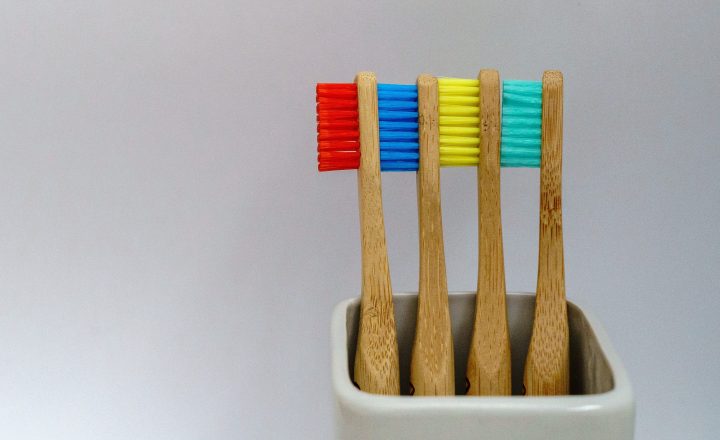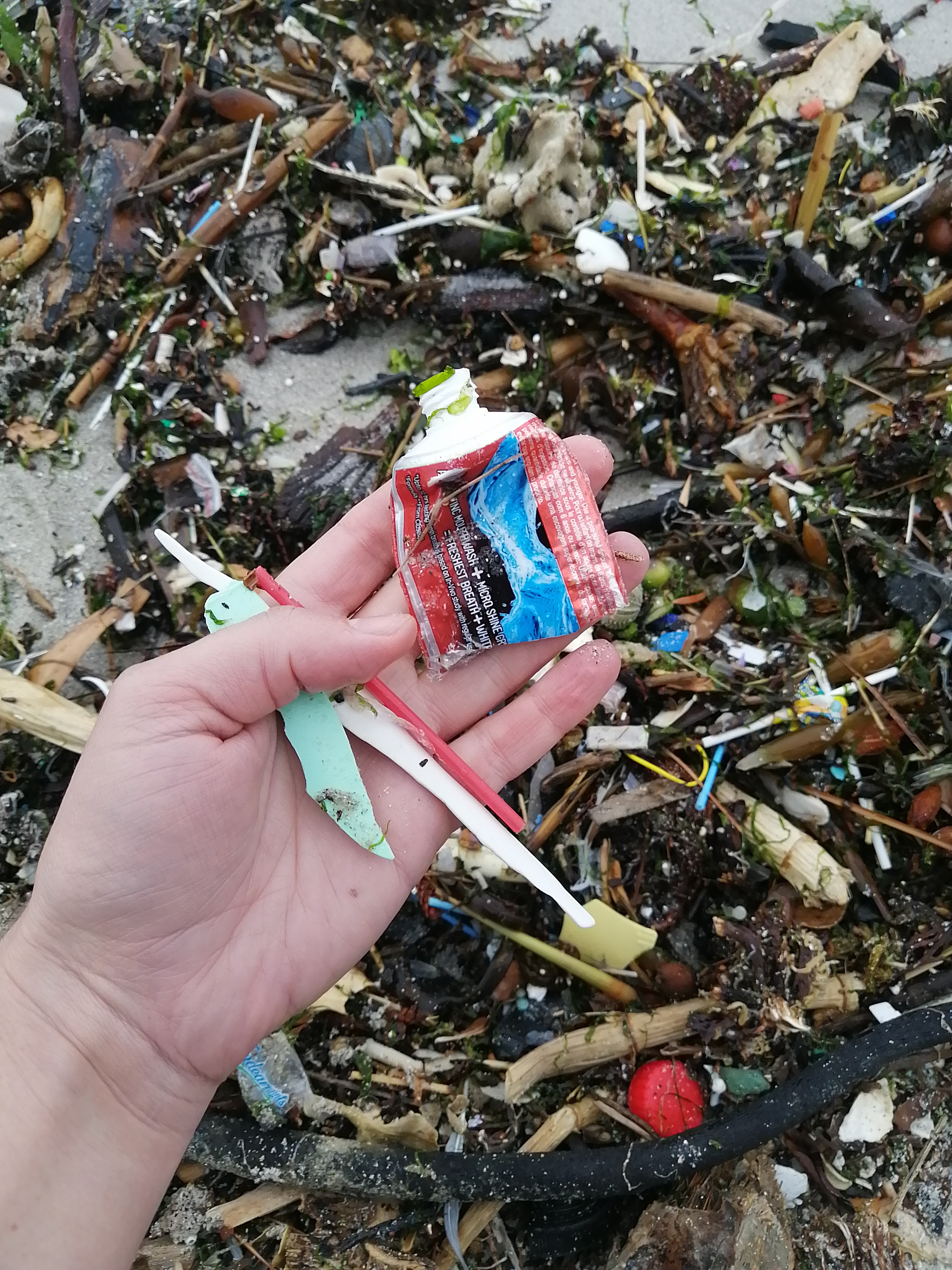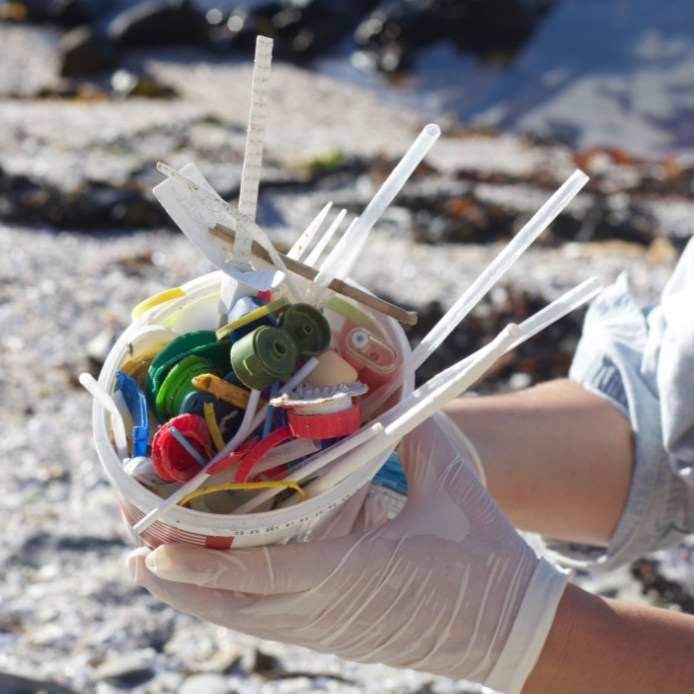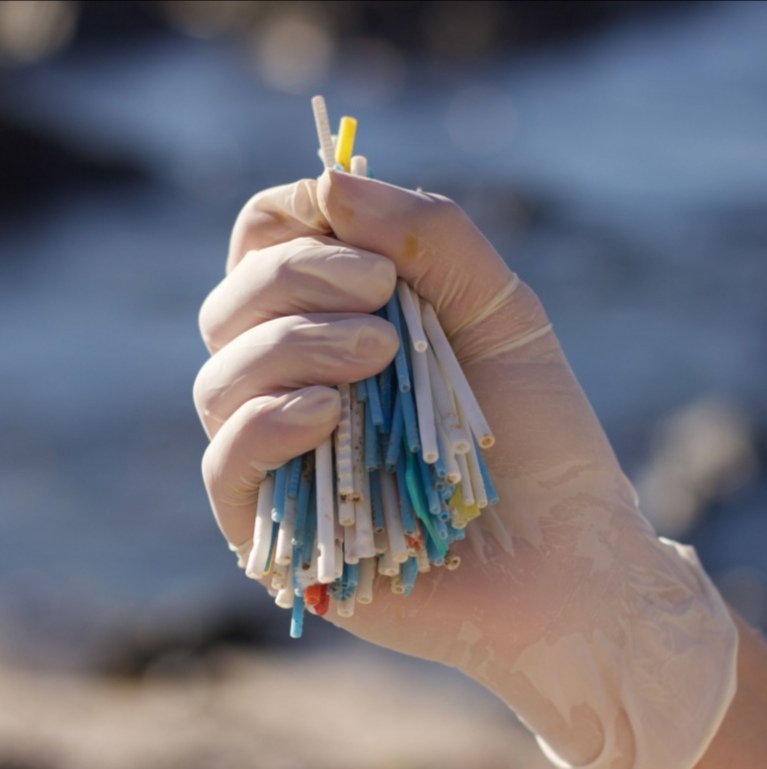BRISTLING AT POLLUTION
Battling the bane of the proliferating plastic toothbrush

Discarded plastic is killing marine life, threatening food security, contributing to climate change and dissolving into microplastics that contaminate land, water, the atmosphere and even the human bloodstream. Let’s start with your toothbrush…
A toothbrush is such an innocent little thing. A strip of plastic with some bristles at one end. Same with toothpaste: a neat tube with a plastic top.
But consider this. There are eight billion people on earth. Let’s be conservative and say only half use toothbrushes. The average person goes through around 300 toothbrushes in their lifetime.
So right now, there are at least one trillion and two hundred billion toothbrushes in existence. And remember plastic doesn’t break down except into smaller and smaller bits of itself. It’s literally indestructible.
As you can’t re-bristle a toothbrush – they’re all single-use objects. Plastic throwaways. Nearly every toothbrush made since the 1930s, when plastic was introduced, is still out there in the world somewhere, living on as a piece of trash.
Plastic is a petroleum product, so the CO2 footprint includes producing the petroleum, refining it to produce the raw materials, ethylene, propylene and the like. That is then polymerised to make the plastic. And brushes come in plastic packaging.

Dental care littering a beach in Cape Town. Image: Chrismarie Barnardt

Image: Chrismarie Barnardt
An average toothbrush weighs 18 grams (let’s forget the packaging) which means 55 make up a kilogram. So we’re talking about 22 million tonnes of toothbrushes in landfills and the sea right now, but multiplying daily.
That’s equal to the weight of 66 Empire State Buildings.
Each year, in the UK, discarded toothbrushes stacked end to end would encircle the planet twice. Twice that many are binned in the US. A huge number get into the ocean.
That’s just toothbrushes. What about everything else, say toothpaste: it’s just as bad. Many tubes are made of plastic and aluminium laminars that cannot be recycled. Some toothpastes even contain plastic microbeads to scour your teeth. Swallow at your peril. Do we need it? Not really, but we’re addicted.
It’s calculated that by 2050 there could be more bits of plastic in the sea than fish. These are just numbers, but imagine being a fish or a seabird?
Toothbrushes look like fish. Wieteke Holthuijzen, a bird researcher on Midway, a Hawaiian atoll, witnessed the result. “I remember seeing an adult come back to feed its chick and it was having a really hard time regurgitating something. Then it regurgitated a toothbrush – and the chick ate it. It’s awful but actually happens here quite a bit.”

Plastic junk collected off of a beach in Cape Town. Image: Chrismarie Barnardt

Plastic straws on a Cape Town beach. Image: Chrismarie Barnardt

Plastic junk on a Cape Town beach. Image: Chrismarie Barnardt

Image: Chrismarie Barnardt
Toothbrushes have a long history. Tooth sticks have been found in Egyptian tombs. Around 3000 BC, Babylonians chewed twigs to clean their teeth, as did Buddha. The Roman author Pliny the Elder used a porcupine quill.
In the 1400s, the Chinese emperor Hongzhi designed something that looked a lot like the brush we know today. It featured a pack of boar bristles set into a bone or wood handle. Nothing altered from then until the American Civil War in the mid-1800s, which changed everything.
At the time, all guns were muzzleloaders with powder and bullets pre-wrapped in twists of heavy paper. Soldiers needed to tear the twists open with their teeth, but many lacked even the six well-anchored opposing teeth to rip the paper apart.
The Union Army despaired, but the Confederate Army conscripted dentists who stressed preventative care and toothbrushes became an army issue. Then, in World War 1, the US military discovered that otherwise healthy young men they wanted to recruit needed good teeth to eat the tough, dry military rations, but many didn’t have them.
By World War 2, dentists were embedded in battalions and toothbrushes were compulsory gear. Back home public campaigns were launched touting the benefits of healthy teeth. They couldn’t have imagined the destructive impact on the environment that would follow good dental care.
Fast-forward to the 21st Century and bamboo toothbrushes have now become a great alternative to plastic toothbrushes – soon followed by other bamboo-made products.
Dental hygienist Chrismarie Barnardt grew up in polluted Sasolburg, studied in Pretoria, then zigzagged to Cape Town via Stellenbosch. She found a job in a dental practice in the Waterfront until Covid hit. Unemployed. And so, she decided to use the time to create “a sustainable oral care range that would be good for the planet”.
“I figured that if I was going to get serious about sustainable dental products, it was now or never. The result was a startup called Kindbrush. The toothbrush came first, then corn-based dental floss in a recyclable glass bottle”.

Kindbrush founder Chrismarie Barnardt. Image: Supplied
The toothbrush is “made from bamboo to provide people with an easy, affordable alternative to plastic… They’re made in China for now, because that’s where bamboo is grown sustainably for commercial use. I know that shipping leaves a carbon footprint, and I’d absolutely love to rather have brushes manufactured in South Africa. It all depends on finding a local supplier and manufacturer with the right technology that would produce a top quality product.”
After that, Barnardt started thinking about toothpaste. “The tubes are as bad as plastic toothbrushes.”
The result is a dehydrated toothpaste in a pill form called Bite&Brush. You bite, wet your toothbrush and brush and you have a mint toothpaste much like any other. The main active ingredient is hydroxyapatite, a substitute for fluoride. It’s a form of calcium that makes up 97% of your enamel and nearly 70% of our dentine.
“Hydroxyapatite prevents harmful bacteria from attaching to the enamel, remineralizes your teeth to help keep them strong and prevents sensitivity. Its first use was by NASA to help restore teeth and bone loss by astronauts following gravity-free environment missions.
“Most people use too much toothpaste,” Barnardt tells me over a cup of coffee in Cape Town’s Company Gardens. “That means more empty tubes in dump sites. You only need a pea-sized amount.
“There’s a well-known toothpaste manufacturer that wanted to grow sales, so they increased the diameter of the neck of the tube. And it worked. People used more toothpaste… and, of course, more tubes.
“Just look at adverts. They show the size of the paste almost equal to the size of the brush head, so you think that’s what’s needed. It’s not.”

Bamboo toothbrush, dehydrated toothpaste and dental floss by Kindbrush. Image: Supplied
Now Barnardt is on a campaign to get people to rethink their dental habits for the sake of the planet. It’s hard work and she’s a startup with very little capital and in search of an inspired backer.
“You need 60 tooth tablets a month and you have to sell hundreds of thousands to make it worthwhile at the tablet pressing plant. I have a challenge, but it’s worth it.
“We’re sitting with a far bigger problem than oral care, but I’m just doing my little bit from where I stand. We need to act now and try to live a life with a smaller footprint, and it is possible. Take earbuds…”
Barnardt was prowling Cape Town’s beaches for toothbrush flotsam (she found piles) but also came across hundreds of earbuds.
“They’re a massive pollution problem. They could easily be bamboo – it’s a magical plant and grows fast. But the factories would need to be retooled, so they just keep churning out plastic buds. These large corporations don’t care.”
Although earbuds made from bamboo are already available on the market, she might soon add them to her own range of products. But for now, she’s on an educational trajectory. “I often find that dental professionals are not aware of sustainability issues. The use of single-use plastic PPE skyrocketed during the global pandemic. There are alternatives, but…”
Barnardt, almost literally, has the bit in her teeth and is unswerving in her commitment to changing our dental habits one brush at a time – for the sake of the planet. “My challenge,” she says, “is now to educate, market and sell.” She drops a little reusable tin of Bite&Brush tablets in my hand as she stands to leave. “Try them. Tell me what you think.” DM/ML


















 Become an Insider
Become an Insider
I every morning when I stand in front of the basin with my bamboo toothbrush, I look at the plastic tube of paste and wonder how many million are going into the trash today… the tablets sound like an amazing option and we are definitely going to try them!
We already use the glass-bottles of floss, shampoo and conditioner bars (not plastic bottles) and cream based deodorant in a glass container… a big benefit is the reduction in the size of our toiletry bags when travelling as all of the basics take up minimal space now!
Thank you, Don Pinnock, for raising awareness about dental plastic pollution. I highly commend Kindbrush founder for tackling this problem and wish her well in her business. However, people have different preferences in terms of size of brush, hardness, bristle configuration, etc. and may wish to stick with the type of brush they have come to prefer. So it would be great if we write to our favoured toothbrush provider and push them to minimise their use of plastic, and also raise the issue of plastic over-use with our dentists.